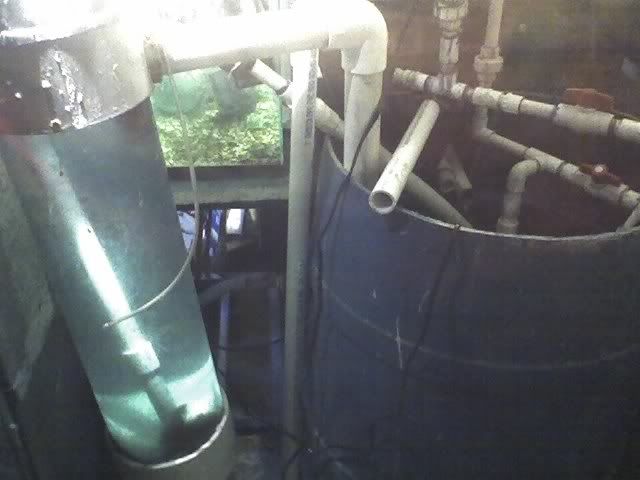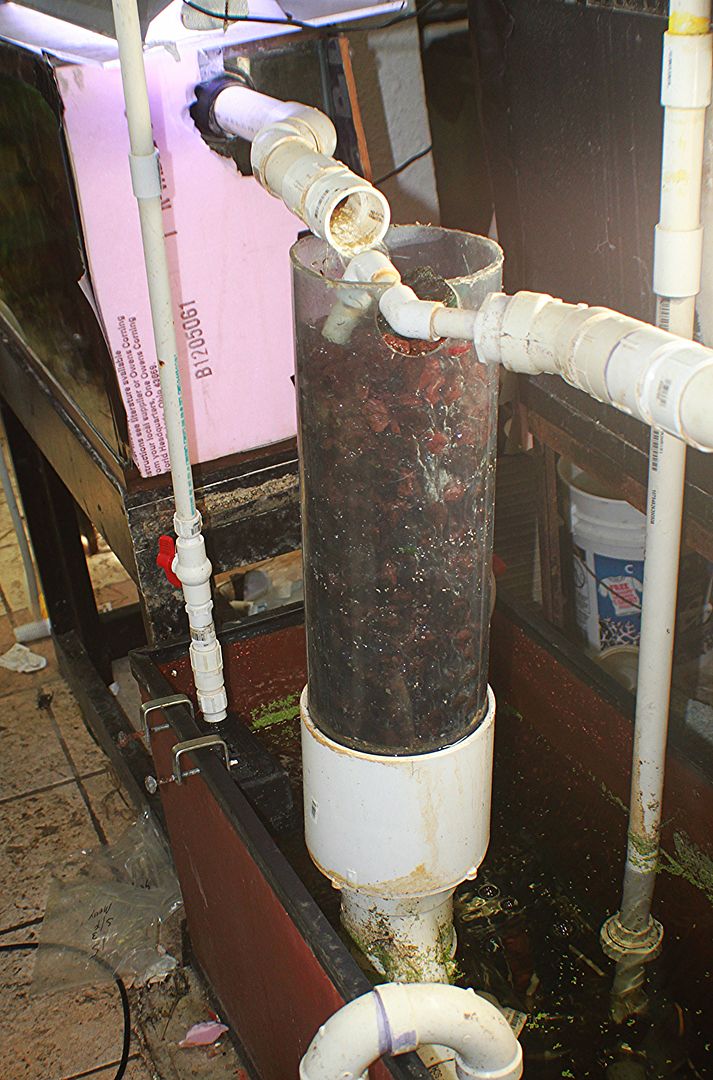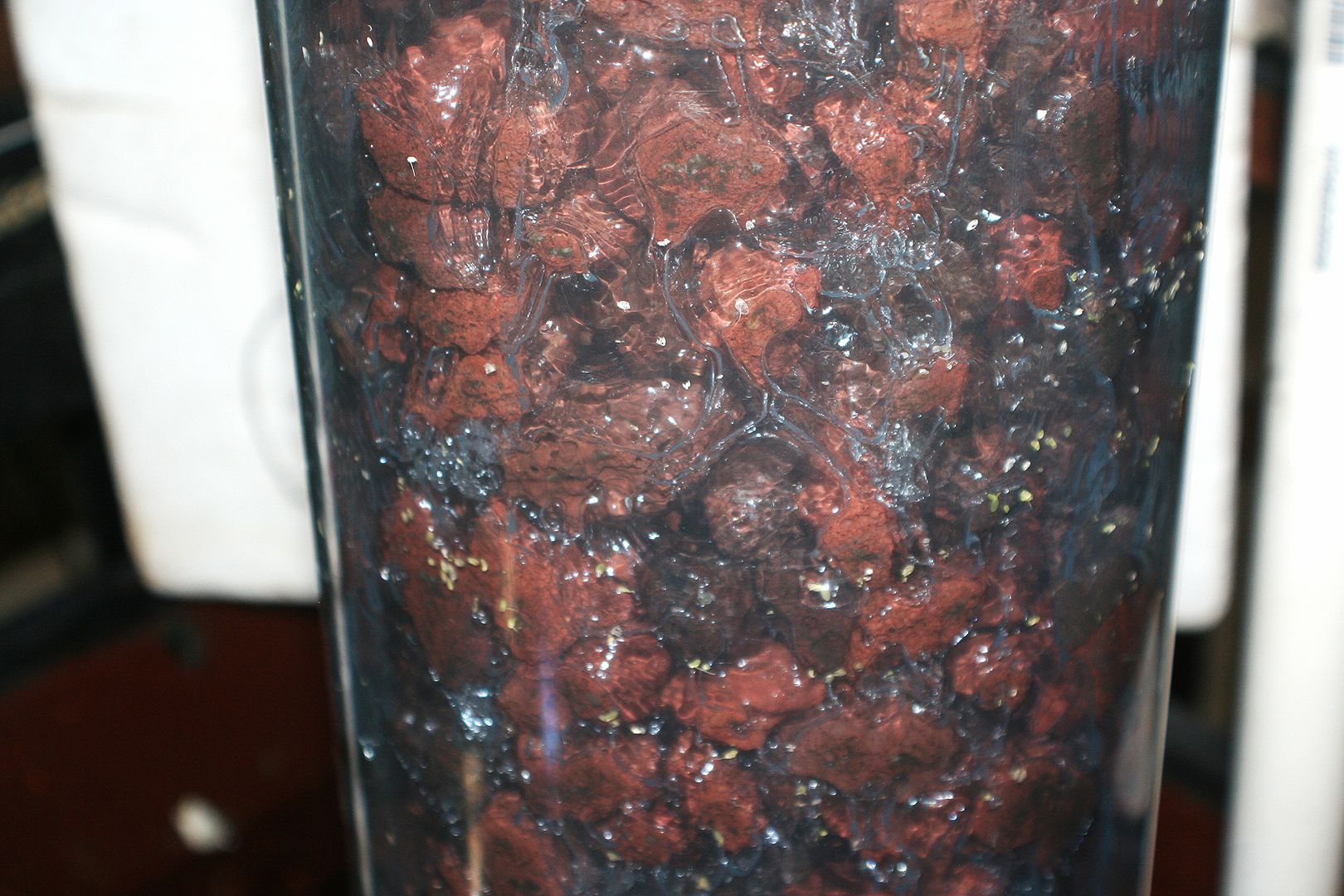Do ceramic rings work ? Or is it just marketing?
- Thread starter raja
- Start date
You are using an out of date browser. It may not display this or other websites correctly.
You should upgrade or use an alternative browser.
You should upgrade or use an alternative browser.
Nice now that the surface area of ceramic is just external ,time to diy a fluidized sand filter .Since I have found pot scrubbies I honestly don't use anything but them. Easy to get and super cheep while effective.
This picture came from another thread on this site and is not mine.
View attachment 1398557
In theory those are one of the most effective types of bio media filters per cubic foot. I have yet to use one myself but have heard a lot of really good reviews. One day I plan on building one.Nice now that the surface area of ceramic is just external ,time to diy a fluidized sand filter .
One of the most interesting aspects of fluidized media, is that the constant motion, and bashing into one another, sloughs off less robust, old colonies making room for more new, robust, more efficient colonies to replace the old ones.
A DIY model below I made our of 4' tall clear PVC by 8" in diameter.

the aragonite used as media also worked as an alkalinity buffer.
But by regular rinsing off of media in bags, a similar exchange of old worn out colonies, making room for newer robust colonies can be achieved (no matter what type media is in the bags)

A 4' tall bio-tower using Scrubbie's and lava rock a media below


The unit above, was the bio-filter in a 75 gal sump, servicing a line of 5 tanks equaling about 400 gallons, a few tanks overstocked, with never a hint of ammonia.
I found a regular blast with the garden hose down the column, helped dislodge old worn out colonies making room for the newer robust ones.
A DIY model below I made our of 4' tall clear PVC by 8" in diameter.

the aragonite used as media also worked as an alkalinity buffer.
But by regular rinsing off of media in bags, a similar exchange of old worn out colonies, making room for newer robust colonies can be achieved (no matter what type media is in the bags)

A 4' tall bio-tower using Scrubbie's and lava rock a media below


The unit above, was the bio-filter in a 75 gal sump, servicing a line of 5 tanks equaling about 400 gallons, a few tanks overstocked, with never a hint of ammonia.
I found a regular blast with the garden hose down the column, helped dislodge old worn out colonies making room for the newer robust ones.
Part of my job as microbiologist for a water production plant was a yearly assessment of the efficiency of 40 large filters, using the manual put out by the AWWA (American Water Works Association). Although these filters were gigantic compared to even the largest aquarium filters, many of the concepts of maintenance were of use to my fish room.


The thing with the ceramic rings is that they came first and were in play long before the scrubbies were thought of for use in filter systems.The scrubbies could be viewed as a bit of an improvement so to speak.If ceramic rings provide only external surface area then how is it any better than a plastic media like pot scrubbies.
The question is not whether ceramic rings will work, but whether you provide the conditions for it to work. Any media that provide large surface areas for BB to thrive under aerobic conditions will work, so ceramic rings, larva rock or gravel beds with good flow over it will all work. I don't see the need to provide a dedicated bio bed, just maintain good flow over a thin substrate by HOBs and circulation pump to achieve 100% biofiltration.
Interesting and informative thread, thanks to all.
That chart looked like a very worthwhile source of useful info, but in examining it more closely I am left with some doubts. It shows "surface area per cubic foot", but what is the unit of the surface area? Square feet? It would be interesting to know, but without that info the numbers are still useful just to compare one media to another.
Except...some of these numbers seem a bit difficult to believe. Sand (grain size unspecified, despite it being an important factor) is shown as having a surface area of 150 square meters per gram! I have a hard time believing that.
Activated carbon is supposedly rated at 30000 square yards per ounce. Aside from the shifting of units of measurement, which makes comparison difficult, this one sounds like a prime example of a surface area which would quickly...very quickly, I would suspect...become clogged, reducing the available surface by a couple orders of magnitude.
Or am I just too much of a cynic?
That chart looked like a very worthwhile source of useful info, but in examining it more closely I am left with some doubts. It shows "surface area per cubic foot", but what is the unit of the surface area? Square feet? It would be interesting to know, but without that info the numbers are still useful just to compare one media to another.
Except...some of these numbers seem a bit difficult to believe. Sand (grain size unspecified, despite it being an important factor) is shown as having a surface area of 150 square meters per gram! I have a hard time believing that.
Activated carbon is supposedly rated at 30000 square yards per ounce. Aside from the shifting of units of measurement, which makes comparison difficult, this one sounds like a prime example of a surface area which would quickly...very quickly, I would suspect...become clogged, reducing the available surface by a couple orders of magnitude.
Or am I just too much of a cynic?



